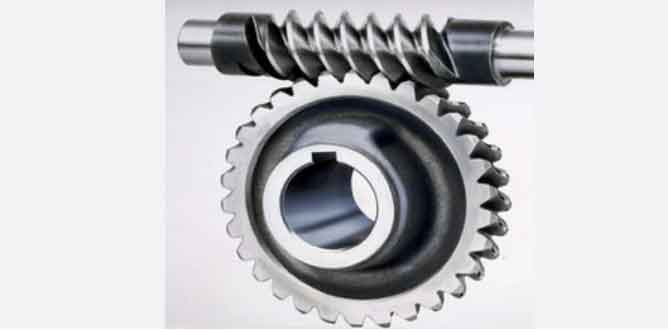
Comparing worm gears to other gear types involves considering their unique characteristics, advantages, and limitations. Let’s explore how worm gears differ from other gear types:
1. Spur Gears:
- Advantages: Simple and easy to manufacture, efficient for transmitting power between parallel shafts, cost-effective, and available in various sizes and materials.
- Limitations: Only suitable for low-speed applications, produce axial thrust, and may create noise and vibration during operation.
2. Helical Gears:
- Advantages: Smooth and quiet operation, high load-carrying capacity, efficient power transmission, and less prone to producing axial thrust.
- Limitations: More complex to manufacture than spur gears, may have axial forces that require additional bearings, and generate axial loads on the shafts.
3. Bevel Gears (Straight and Spiral):
- Advantages: Allow power transmission between intersecting shafts, can change the direction of rotation, efficient for high-speed applications, and have good load-carrying capacity.
- Limitations: Complex manufacturing process, require precise alignment during assembly, and may produce axial loads on the shafts.
4. Hypoid Gears:
- Advantages: Allow power transmission between non-intersecting shafts, high torque capacity, smoother meshing compared to spiral bevel gears, and compact design.
- Limitations: Complex design and manufacturing process, require specific gear geometry, and may produce sliding friction leading to heat generation.
5. Planetary Gears:
- Advantages: High load-carrying capacity, compact and efficient design, multiple ratios within the same gear system, and capable of handling large torque.
- Limitations: Complex assembly and maintenance, higher manufacturing costs, and may experience thrust loads on the bearings.
6. Rack and Pinion Gears:
- Advantages: Convert rotary motion into linear motion, high efficiency, simple design, and suitable for a wide range of applications, especially in robotics and automation.
- Limitations: Limited to linear motion, may require precise alignment, and potential for wear and tear on the rack.
Advantages of Worm Gears:
- High Reduction Ratios: Worm gears can achieve high reduction ratios with a single gear set, making them suitable for applications requiring significant speed reduction.
- Self-Locking: Worm gears have a self-locking property, meaning they can hold position without the need for additional brakes or locking mechanisms.
- Compact Design: Worm gears offer a compact design, making them ideal for applications with limited space.
- High Efficiency: Worm gears can be very efficient in power transmission when properly designed and lubricated.
- Quiet Operation: When designed and manufactured correctly, worm gears can operate quietly.
Limitations of Worm Gears:
- Limited Speed Range: Worm gears are not suitable for high-speed applications due to potential heat generation and wear.
- Axial Thrust: Worm gears generate axial thrust on the shaft, which requires additional bearings to handle the thrust load.
- Efficiency Variation: The efficiency of worm gears can vary significantly based on the design, materials, and lubrication, making proper engineering essential.
- Backlash: Worm gears may have some amount of backlash, which can affect precision in certain applications.
Each gear type has its advantages and limitations, and the selection of the appropriate gear type depends on the specific requirements of the application, such as speed, torque, efficiency, and space constraints. Engineers must carefully consider these factors to choose the most suitable gear type for optimal performance and reliability.
